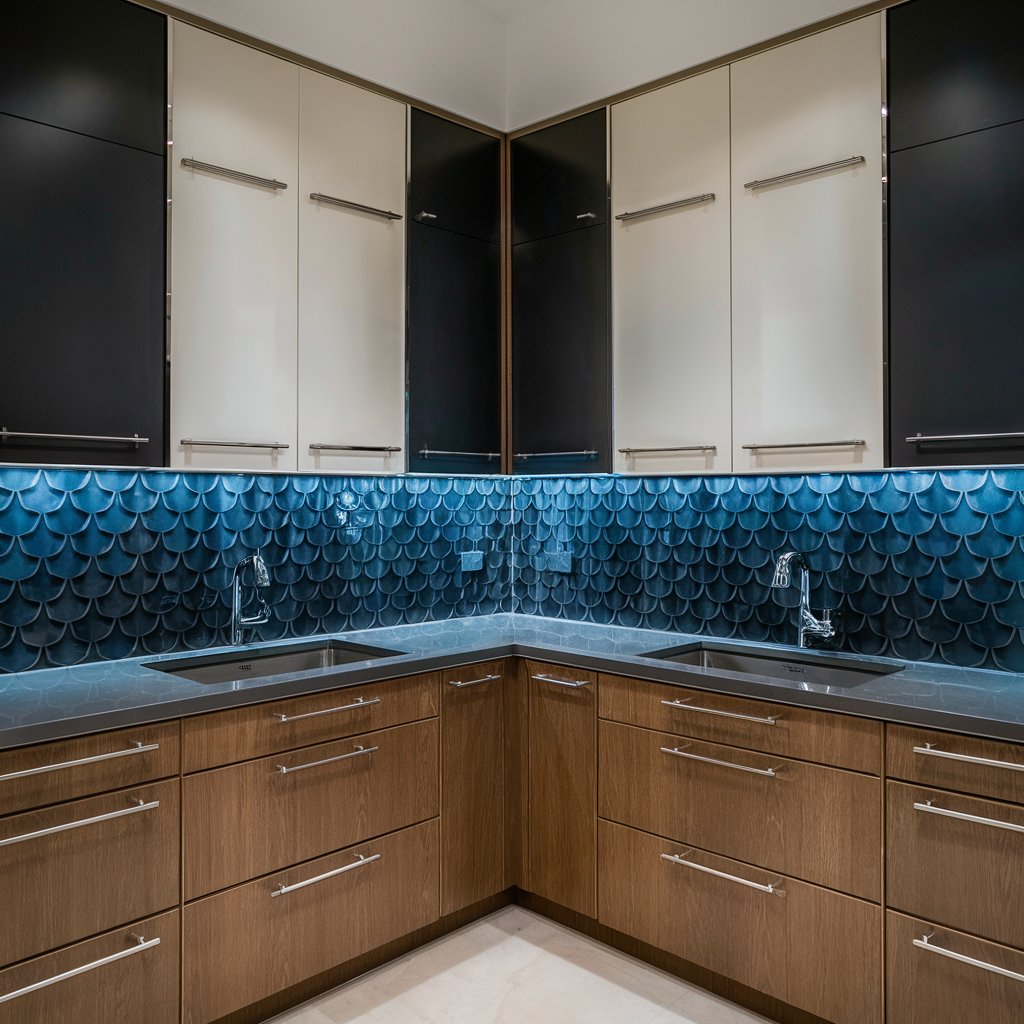Wood Types for Custom Kitchen Cabinets: A Guide to Selection

In the realm of Custom Kitchen Cabinets, the selection of wood type plays a pivotal role in determining both the functionality and aesthetic of the end product. Hardwoods such as oak, maple, and cherry dominate the market, each offering distinct advantages. Oak, for instance, is highly valued for its exceptional durability and its ability to adapt to a myriad of stains and finishes due to its prominent grain. Maple, with its subtle grain patterns, offers a more uniform appearance and is renowned for its strength and resistance to wear. Cherry wood, prized for its deep, evolving color and fine grain, lends a touch of sophistication and warmth to any kitchen design. As one delves into the specific characteristics of these woods, the balance between their natural beauty and practical benefits becomes apparent, guiding the decision-making process for bespoke cabinetry solutions. What remains to be explored, however, is how these materials stand up to the rigors of kitchen use and the subtleties of ongoing maintenance.
Exploring Popular Wood Types
While numerous materials are available, hardwoods such as oak, maple, and cherry remain the most popular choices for custom kitchen cabinets due to their durability, aesthetic appeal, and ability to be finely crafted.
Each of these wood types offers unique characteristics that cater to varying aesthetic preferences and architectural styles, enhancing the sense of belonging and warmth in the kitchen space.
Oak, known for its pronounced grain pattern and robustness, brings a traditional charm and substantial feel to cabinetry. It absorbs stains well, allowing for a versatile range of finishes from light to dark tones, fitting seamlessly into both rustic and contemporary designs.
Maple, with its fine, consistent grain, lends a smoother texture and is highly favored for its lighter natural color that brightens kitchens and adapts well to both minimalist and sophisticated themes.
Cherry wood stands out with its rich, warm hues that deepen with age, conveying a luxurious and inviting ambiance. Its smooth grain and resilience make it ideal for intricate carving and high-end cabinetry, reflecting a blend of elegance and heritage.
Selecting the right wood type is pivotal in creating a kitchen that not only meets functional needs but also resonates with the homeowner’s personal style and vision, fostering a sense of identity and belonging within the space.
Evaluating Durability and Maintenance in Custom Kitchen Cabinets
Assessing the durability and maintenance requirements of different wood types is crucial for ensuring long-term satisfaction and ease of care in custom kitchen cabinetry. Hardwoods like oak, maple, and cherry are renowned for their robustness and longevity. These species offer a dense grain structure that resists wear and tear, making them ideal for high-traffic kitchen environments. Oak, in particular, features prominent grain patterns that can hide minor scratches and dents, enhancing its durability.
Conversely, softer woods such as pine or cedar require more meticulous care to maintain their aesthetic appeal. These materials are more susceptible to scratches and dents, necessitating a gentle cleaning regimen and possibly more frequent refinishing sessions to preserve their surface integrity.
The finish applied to the cabinetry also plays a pivotal role in maintenance. High-quality sealants can protect the wood from moisture and stains, thereby extending the lifespan of the cabinets. Opting for a satin or semi-gloss finish can further provide a cleanable surface that withstands the rigors of daily use.
For those who value both beauty and practicality in their kitchen design, understanding the balance between wood type, durability, and maintenance needs is essential. This knowledge ensures that your choice not only reflects your aesthetic preferences but also accommodates your lifestyle for years to come.
Conclusion
In the realm of Custom Kitchen Cabinets, the juxtaposition of oak’s robust grain, maple’s subtle elegance, and cherry’s deep richness illustrates a vivid tableau of choices. Each wood type not only offers a distinct aesthetic allure but also embodies characteristics of durability and maintenance that cater to diverse functional demands and design preferences.
Thus, selecting the appropriate wood type becomes a pivotal decision that marries the practicalities of longevity and upkeep with the visual harmony of the kitchen’s design ethos.
Read More:
Exotic Woods in Custom Kitchen Cabinets: Unique and Luxurious Choices
Classic Elegance: Choosing Hardwood for Custom Kitchen Cabinets
Post navigation
RECENT POSTS
categories
- Testimonials
- Kitchen Remodeling
- Bathroom Remodeling
- Home Addition
- Agoura Hills
- Westlake Village
- Calabasas
- Home Remodeling
- Newbury Park
- Moorpark
- Westlake Village
- Oak Park
- Westlake Village
- Newbury Park
- Oak Park
- Bathroom remodel
- Westlake Village
- Newbury Park
- Moorpark
- Oak Park
- Kitchen Remodel
- Moorpark
- Newbury Park
- Oak Park
- Westlake Village
- Moorpark
- Room Addition
- Calabasas
- Woodland Hills
- Custom Kitchen Cabinets
- Custom Bathroom Cabinets
- Bathroom and Kitchen Design
- Bathroom Vanities
- Garage Convesion to ADU
- Full Kitchen Remodel
- Full Bathroom Remodel
- Thousand Oaks
- Hidden Hills
- garage conversion to adu
- garage conversion to adu service
- Top-sights
Archives
2024
- October (12)
- September (12)
- August (27)
- July (39)
- June (23)
- May (35)
- April (23)
- March (23)
- February (20)
- January (21)
2023
- December (28)
- November (24)
- October (26)
- September (4)
- July (2)
- June (13)
- May (17)
- April (8)
- March (34)
- February (8)
- January (5)
2022
- December (4)
- October (27)
- September (24)
- August (20)
- July (20)
- June (20)
- May (20)
- April (25)
- March (20)
2021
2020
- December (82)
- November (67)
- October (13)
- September (14)
- August (4)
- July (4)
- May (8)
- April (4)
- February (20)
